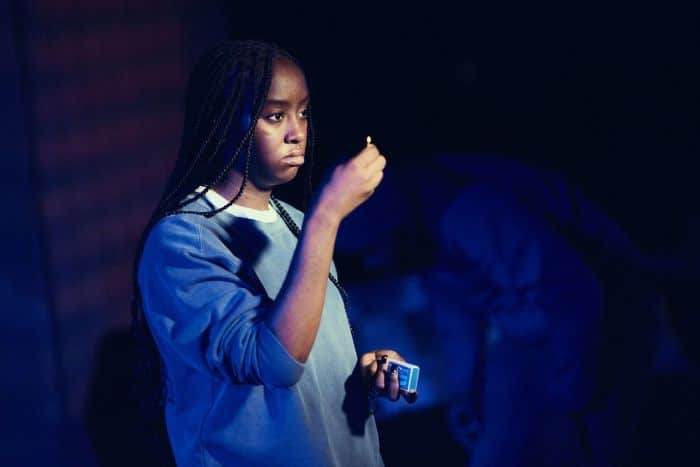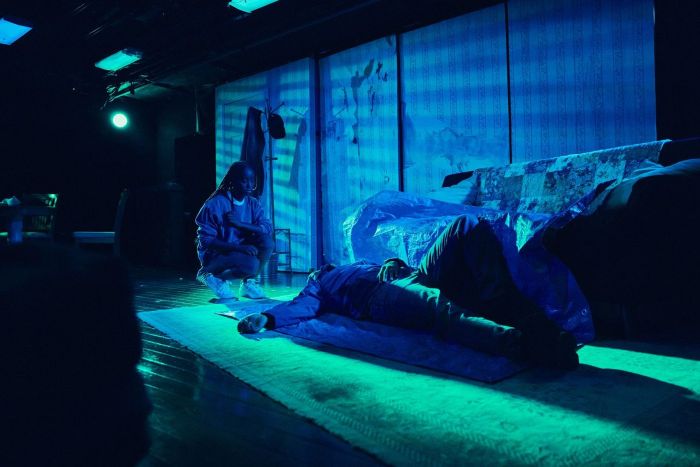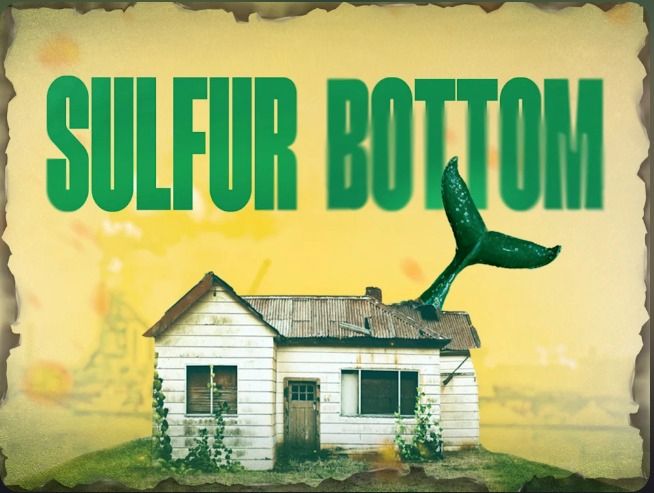Playwright Rishi Varma explores the emotional conflict of wanting to remain in a family home that has become increasingly unhealthy as a result of environmental decay and toxic pollution in his surreal eco-gothic drama Sulfur Bottom, now playing an Off-Broadway engagement at The Theater Center’s Jerry Orbach Theater. Directed by Megumi Nakamura, the critical issues of personal legacy, industrial over-development, financial need, and survival in a poisoned world are seen through the eyes of the embattled family over 40 years and across three generations, as they confront the inherited trauma of their history, the inherent dangers of their small town’s economic development, and the uncertain future of their residence, the planet, and its inhabitants.

In addition to the serious and timely themes, Varma injects touches of humor and an overriding sense of absurdism into the play. Set in the interior of the old increasingly deteriorating house, the sometimes confusing story moves back and forth in time and dimension, from living characters in present-day scenes to their memories and revealed secrets of the past, imaginings and post-mortem appearances, as they discuss their dilapidated home, disagree over what to do with it, and ultimately come together as a bonded family, joking over dinner (be it in the mind or in the afterlife) on the site of the no-longer extant house. Along with the human figures are a killed deer and a beached whale, whose deaths further exemplify the negative impact of people on the earth’s natural creatures and habitat, and who are embodied by two of the same actors playing members of the family, adding to the surrealist tone of the show.
A cast of six captures the distinctive personalities (the same actors all portray their characters at different ages, again causing some initial confusion as the scenes switch and time shifts), their opposing viewpoints and choices, as well as the dark humor and strange otherworldly goth elements. The narrative revolves around the argumentative and occasionally creepy Fran (played by Kendyl Davis), who, as the story opens, was just kicked in the head by the deer that she and her father Cavin, who insists on being called “Sir Cavin” (an expressive Kevin Richard Best) were out hunting – perhaps intended as a metaphor for the natural world hitting back at the devastation caused by self-important humans. They are joined by her foul-mouthed Aunt Melissa (Joyah Dominique, who delivers many of the show’s laughs with her snarky attitude and constant f-bombs), and the tensions regarding their shared living situation begin to mount. Because of the encroaching industrialization, Cavin – both hopeful and in denial, as well as nostalgic about maintaining the home he grew up in with his parents – has a job, but Fran feels trapped and Mel has always dreamed of leaving.

Subsequent scenes jump to Fran’s adulthood, marriage to Winter (Eric Easter), who becomes progressively stressed out and frustrated, and the birth of their infant daughter Maeve. After that we see a grown and bleeding Maeve (Feyisola Soetan), representing the last generation who’s been physically affected by the unlivable conditions and destruction of the house by seeping raw sewage and deadly toxins that leave the living room rug and walls filthy, the expensive and extensive much-needed repairs that were not fully addressed, despite Cavin, who coughs a lot, obtaining a sizable loan from the persuasive Copal, a local politician supporting the industrial sprawl and proud of his rising status (played by Aaron Dorelien filling in for Isaiah Joseph at the performance I attended), and a mysterious fire that may or may not have been intentionally set.
Everyday costumes (by Roger Teng) lend credibility to the characters, while a blue plastic tarp wrapped around Best as the whale suggests its illusory manifestation. A compact set (by Daniel Prosky), with a back wall comprised of four rotating panels, shows the deteriorating conditions of the family home, and eerie lighting (by Sam Weiser), sound (by Sid Diamond), and original music (composed by Jacob Brandt) signal the transitions from scene to scene, time to time, and life to death.

The new play is an official event of Climate Week NYC, the biggest global climate event of its kind, presented across all five boroughs from September 21-28, to raise awareness about environmental justice and to underscore the urgent need to address the challenges posed by environmental collapse through the lens of art and storytelling. With performances scheduled throughout that week, Sulfur Bottom seeks to engage audiences in meaningful conversations about the impact of climate change on communities.
While the intent of the work is significant, both in terms of the need for active environmentalism and the eternal importance of familial connection, because of the layout of the theater and configuration of the seating, I was unable to see the floor of the stage, where much of the attention was directed (to the deer, the whale, and the dirty rug), from the row I was in. If you go, my advice is to get seats close to the stage for full visibility and understanding of what’s transpiring throughout the entirety of the show.
Running Time: Approximately 70 minutes, without intermission.

Sulfur Bottom plays through Saturday, October 11, 2025, at The Theater Center, Jerry Orbach Theater, 210 W 50th Street, 3rd floor, NYC. For tickets (priced at $60.60-80.60, including fees), go online, or find discount tickets at TodayTix.



